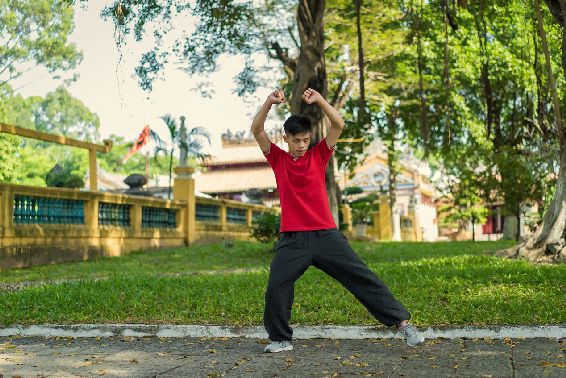

Stance :
Horse stance (Ma Bu) is done with the feet wider than shoulder-width. You can turn out the feet so the knees are facing the same direction as the feet to protect weak knees.
Instructions :
Body : Step out into horse stance while bringing the fists up directly above the elbows and facing forward.
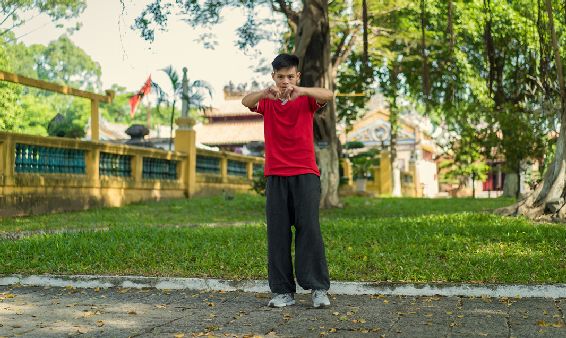
Keep the shoulders in alignment with the elbows so that they are bent at a right angle. Push with your right leg off the ground and bend to your left side, bringing your right fist over your head. Focus on stretching your right side and feel the compression on the left.
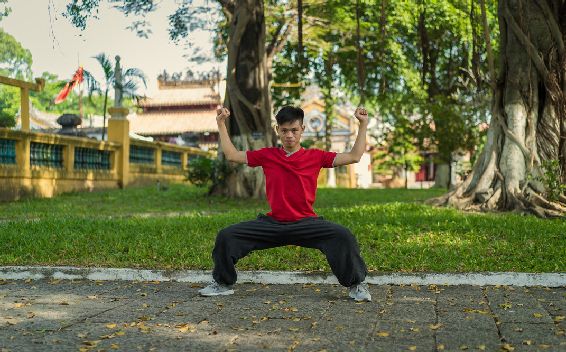
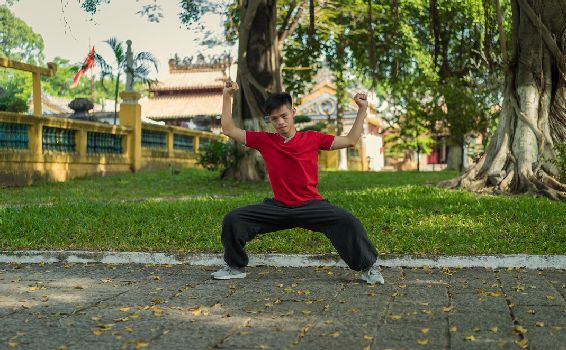
This is expanding the liver area and compressing the spleen. Make sure to keep the right foot pointed to the ground. Put the foot down and repeat on the other side.
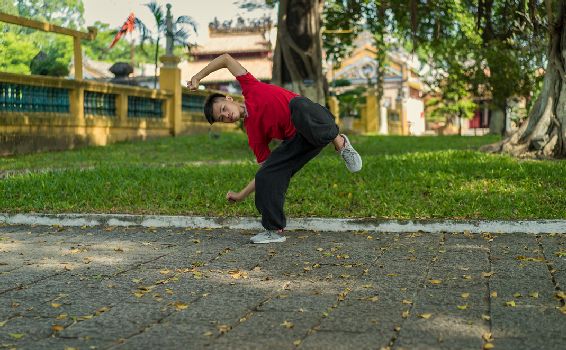
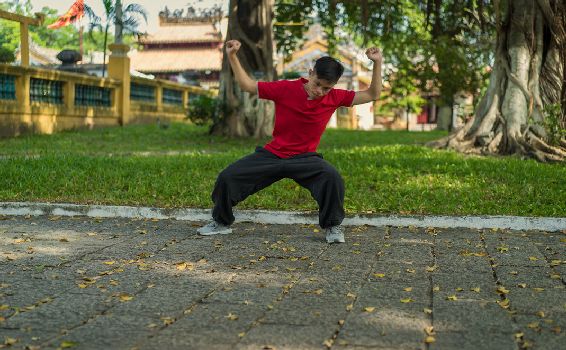
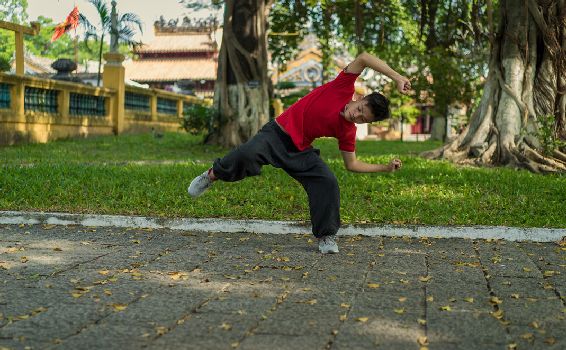
Breath : Breathe in as you go into horse stance and breathe out as you bend. Then breathe in as you come up and breathe out as you bend to the other side.
Spirit : As with all Bear movements, feel the strength and power of the Bear. Feel the weight of the Bear and become the Bear. As the Bear shakes off his paws, he gives one final good strong shake.
Anatomical and Physiological Benefits : Fascia/Anatomy
This is a step deeper and more challenging than Bear III. Bear IV’s sharper movements create more elasticity in the fascia, and more stability while at the same time being on one leg. It is the lateral line that gets an elastic, dynamic stretch with side to side balance and gives a dynamic elastic side stretch. The pulling up of the knee will also help open the hips and psoas a bit.
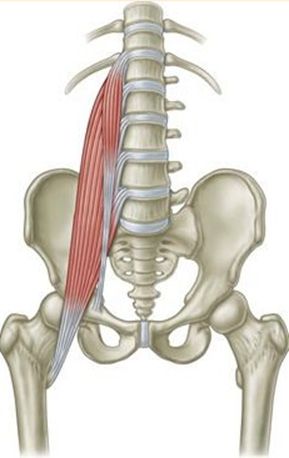
Psoas
Chinese Medicine Relationship :
This time it uses a strategy of a more lateral, direct, intense, and faster paced squeeze on the liver and spleen than any of the other Bear movements.
Meridians/Acupuncture Points Targeted :
Holding the fists holds the Qi in the hands until you release it at the end, sending a surge of Qi to the fingertips, which contain acupuncture points from the major meridians in the arms.